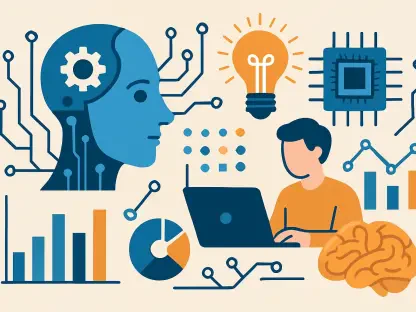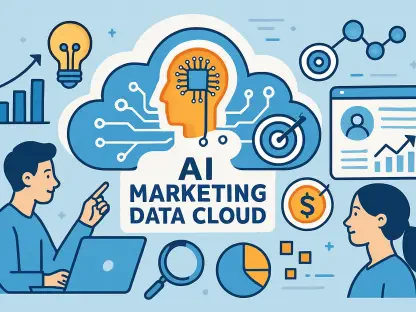The market for Natural Language Processing (NLP) in the education sector is experiencing rapid growth, fueled by advancements in artificial intelligence (AI) and a rising demand for personalized learning solutions. Forecasts indicate that this market will exhibit a compound annual growth rate (CAGR) of 18.30% and is projected to reach a valuation of USD 0.5 billion by the year 2032. The increasing applicability of NLP in education can be attributed to its ability to enhance student engagement, streamline administrative processes, and support adaptive learning systems. Some key applications of NLP in education include language translation, sentiment analysis, and automated grading, transforming the landscape of teaching and learning.
Natural Language Processing, a sub-field of AI, enables systems to understand and process text and spoken words similarly to human comprehension. This technology is adept at handling unstructured data such as text, images, audio, and video, making it an invaluable tool across various educational applications. With AI’s continued evolution, the use of NLP in education is set to expand significantly, offering personalized learning experiences, enhancing academic performance, and improving administrative efficiency. This technological shift promises a future where education is not only more accessible but also more tailored to individual needs, harnessing the power of AI to benefit learners and educators alike.
The Role of Personalized Learning Platforms
One of the primary drivers of the growth of NLP in education is the increasing demand for personalized learning platforms. These platforms leverage NLP to create user-friendly methods for students to grasp complex academic concepts effectively. For example, individualized feedback provided through NLP-powered tools can help students tackle challenges in reading comprehension and writing skills. Additionally, the technology can assess classroom interactions by analyzing sentiments during lessons, offering insightful feedback on student engagement and understanding. This real-time feedback loop is crucial for adapting teaching methods to meet the unique needs of each student.
Machine learning, an integral component of AI, plays a significant role in enhancing NLP capabilities within personalized learning platforms. By enabling the analysis of unstructured data from diverse sources, such as the internet and social media, machine learning contributes significantly to the development of adaptive learning systems. These systems can adjust educational content and methodologies based on each student’s unique needs, ensuring a more effective and personalized learning experience. The synergy between machine learning and NLP enables the continuous improvement of educational tools, making them more responsive and attuned to the evolving demands of learners.
The increasing adoption of personalized learning platforms also reflects a broader trend in education towards more tailored and student-centered approaches. Traditional one-size-fits-all models are being replaced by adaptive systems that recognize and cater to the diverse learning styles and paces of individual students. This shift is not only making education more inclusive but also more engaging for students, who benefit from content and feedback that are directly relevant to their specific needs and challenges. As NLP continues to evolve, its integration into personalized learning platforms is expected to drive significant improvements in how educational content is delivered and consumed, ultimately leading to better student outcomes.
Cloud Computing and Government Initiatives
The adoption of cloud computing is significantly driving the expansion of NLP in the education market. Cloud computing facilitates the efficient handling of extensive data for analysis, making it easier to deploy and scale NLP solutions across educational institutions. By providing the necessary infrastructure to manage and store large volumes of data, cloud computing supports the seamless integration of NLP technologies in educational settings. This scalability is particularly valuable for institutions aiming to implement personalized learning solutions on a large scale, ensuring that all students can benefit from advanced AI-driven tools.
Government initiatives worldwide are also playing a crucial role in propelling the NLP in education market. Recognizing the potential of advanced technologies to improve academic outcomes, governments are encouraging the adoption of AI and NLP solutions in education. These initiatives often include funding for technology integration, professional development for educators, and the creation of supportive policies and frameworks. Such efforts are expected to further drive market growth by making cutting-edge educational technologies more accessible to institutions and learners. The alignment of governmental support with technological advancements is creating a conducive environment for the broad adoption of NLP in education.
The effects of NLP on the education sector are evident in areas like student interaction analysis and feedback provision. NLP systems provide tailored recommendations and learning materials that address individual student needs, helping them improve language skills and monitor their progress more effectively. For instance, algorithms that automatically evaluate essays and programming codes can offer detailed feedback, enabling students to identify and work on their weaknesses. This automated feedback process not only saves time for educators but also ensures that students receive timely and precise evaluations of their work, fostering continuous improvement and learning.
Sentiment Analysis and Emotional Insights
Sentiment analysis, an essential aspect of NLP, plays a critical role in understanding students’ emotions and attitudes through their communications. This technology examines the sentiments expressed in student interactions, helping identify signs of distress, engagement, or confusion. By providing insights into students’ emotional states, sentiment analysis enables educators to make timely interventions, offering counseling or additional support when necessary. This proactive approach ensures that students receive the help they need before challenges escalate, contributing to a more supportive and responsive educational environment.
Advancements in AI and deep learning are further enhancing NLP capabilities, leading to its growing demand in the education market. These technologies support the development of more sophisticated and accurate NLP models, capable of delivering better educational outcomes. Enhanced NLP models can interpret complex language structures and contexts, providing more nuanced feedback and insights. This increased accuracy is particularly beneficial in automated grading and feedback systems, where precise evaluations are crucial for student development. As AI and deep learning continue to evolve, their integration with NLP will likely lead to even more advanced educational tools and applications.
Another significant trend in the NLP in education market is the rising adoption of learning analytics. Learning analytics involves systematically analyzing educational data to gain insights into student behavior, performance, and engagement. By leveraging NLP-powered analytics, educational institutions can track students’ natural language interactions, providing personalized feedback and tailored learning materials. This data-driven approach not only enhances the learning experience but also helps educators refine their teaching strategies. By understanding how students engage with content, educators can optimize their instructional methods and resources, ultimately improving educational outcomes.
Regional Growth and Market Segmentation
Regionally, North America is leading the NLP in education market, primarily due to significant technological advancements and the presence of key market players in the region. The United States, in particular, holds a substantial market share, driven by its role as a hub for AI and machine learning technologies. Innovations in these fields are contributing significantly to the development and growth of NLP applications in education. The region’s strong focus on research and development, coupled with substantial investments in educational technology, positions North America as a frontrunner in the NLP in education landscape.
In addition to North America, the Asia Pacific region is poised for substantial growth in the NLP in education market. Factors such as increasing smartphone usage, rapid technological advancements, digitalization of economies, and supportive government initiatives contribute to this growth. The region’s strong IT infrastructure and extensive software and service offerings create a favorable environment for the expansion of NLP applications in education. Countries like China and India are expected to see significant market growth, driven by their large populations and increasing emphasis on technology integration in education. As these countries continue to invest in educational technology, the adoption of NLP solutions is anticipated to rise, further transforming the educational landscape in the Asia Pacific.
The market for NLP in education is segmented by various criteria, including offering types, model types, applications, and end-users. Different offerings in the NLP market include solutions and services, with solutions further categorized into text-based, video-based, image-based, and audio-based NLP solutions. Each category consists of specific tools such as language translation tools, text-to-speech converters, sentiment analysis tools, video captioning tools, optical character recognition (OCR) tools, speech recognition tools, and more. These diverse tools showcase the wide range of applications NLP can have within the educational sector, catering to different needs and preferences of institutions and learners.
Diverse Applications and End-Users
Services related to NLP in the education market are divided into professional services and managed services. Professional services include consulting, system integration and implementation, training, support, and maintenance. These services ensure that educational institutions can effectively deploy and utilize NLP solutions, providing the necessary expertise and support for smooth integration. Managed services involve ongoing management and support for NLP solutions, allowing institutions to focus on their core mission of teaching and learning without the added burden of maintaining complex technological systems. This division of services highlights the comprehensive support available to educational institutions, ensuring they can fully leverage the benefits of NLP technologies.
Based on model type, the market is classified into rule-based NLP, statistical NLP, and hybrid NLP. Statistical NLP is expected to hold the largest market share during the forecast period due to its superior accuracy and scalability in handling large volumes of text data. Unlike rule-based systems, statistical models can learn from extensive datasets, demonstrating greater adaptability to new domains and languages. This flexibility makes statistical NLP particularly valuable in educational contexts, where it needs to accommodate a wide range of subjects and linguistic nuances. The ongoing advancements in statistical models are likely to further enhance their effectiveness, driving their adoption in the education sector.
Applications of NLP in education are diverse, encompassing sentiment analysis and data extraction, risk and threat detection, content management and automatic summarization, intelligent tutoring and language learning, corporate training, and more. Each application area leverages NLP to provide specific benefits, such as measuring student sentiments, detecting potential threats, managing and summarizing content, and offering intelligent tutoring systems. These varied applications demonstrate the versatility of NLP in addressing different challenges and needs within education, making it a critical component of modern educational technology.
End-users of NLP in education are categorized into academic users and EdTech providers. Academic users include educational institutions seeking to improve student engagement and outcomes through personalized learning experiences. These institutions utilize NLP-powered tools to enhance teaching and learning, providing more tailored and effective educational experiences. EdTech providers, on the other hand, develop and offer NLP-based solutions and services to academic users, driving innovation in the education sector. The collaboration between academic users and EdTech providers is essential for the continued advancement and successful implementation of NLP technologies in education.
Conclusion
The rise of cloud computing is greatly fueling the growth of Natural Language Processing (NLP) in the education sector. Cloud technology allows for efficient data analysis, making it easier to deploy and scale NLP solutions across educational institutions. By providing the needed infrastructure to manage and store large data sets, cloud computing enhances the integration of NLP technologies in educational environments. This scalability is crucial for institutions aiming to implement personalized learning on a large scale, ensuring that all students benefit from advanced AI tools.
Additionally, government initiatives worldwide are key in driving the NLP education market forward. Recognizing the educational benefits of advanced technologies, governments are promoting the adoption of AI and NLP in education through funding technology integration, offering professional development for educators, and creating supportive policies. These efforts are expected to further enhance market growth, making cutting-edge educational technologies more accessible to institutions and learners. The alignment of governmental support with technological advancements is fostering an environment conducive to the broad adoption of NLP in education.
NLP’s impact on education is evident in areas like student interaction analysis and feedback provision. NLP systems offer personalized recommendations and materials that address individual student needs, helping improve language skills and monitor progress. For example, algorithms that automatically evaluate essays and programming codes provide detailed feedback, helping students identify and address their weaknesses. This automated feedback saves time for educators and ensures that students receive timely, precise evaluations, fostering continuous improvement and learning.









